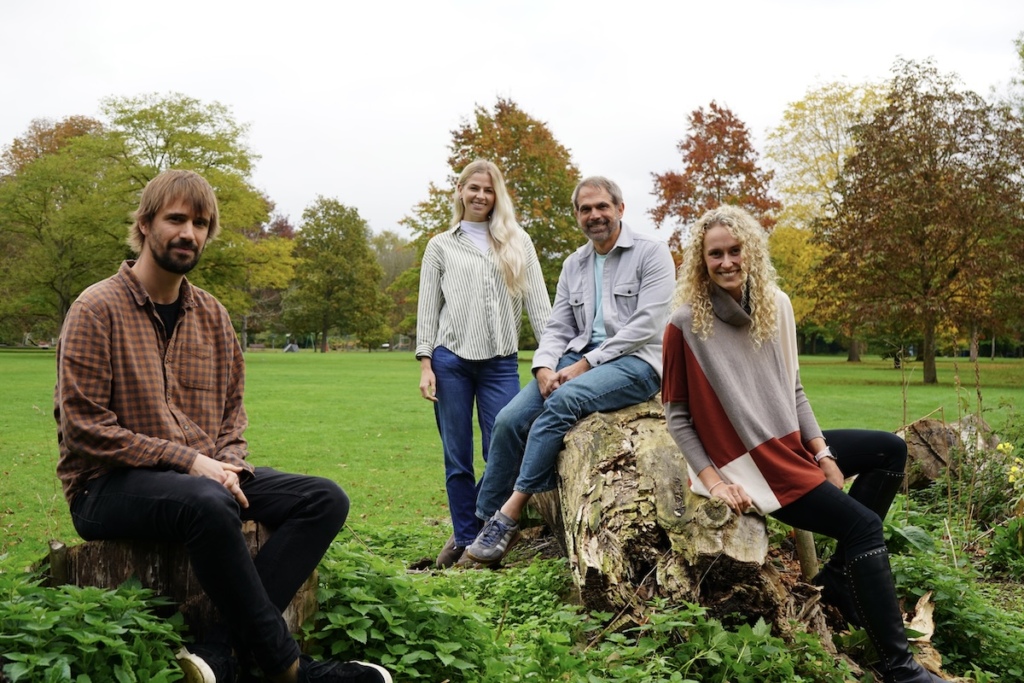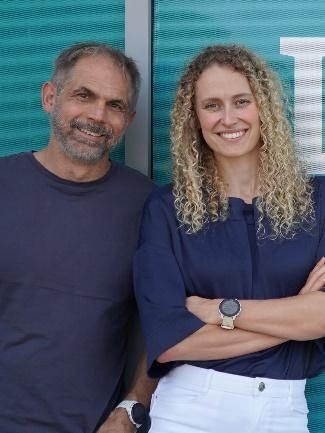
Cyclana Bio co-founder Dr. Léa Wenger was doing her PhD in clinical neurosciences at Cambridge when she was diagnosed with endometriosis. Like many scientists who develop a condition, she dove into the research. What struck her wasn’t just the lack of treatment options – it was how scientifically unusual the disease is.
“Endometriosis is a disease where cells from the uterus grow outside of it, seeding and invading other areas of the body,” said Wenger. “When you describe the disease, it sounds like cancer, but it’s fundamentally different.”
Today, UK-based Cyclana Bio announces it has raised £5 million in a pre-seed round co-led by NfX and Eka VC, with participation from Cocoa VC, Wilbe, and angel investors. The Cambridge-based company is targeting the extracellular matrix – the mesh of proteins and molecules that surrounds cells and provides structural support to tissue – to reverse scarring and develop new treatments for endometriosis.
From Academia to Women’s Health
Wenger started as a veterinary student at Cambridge before pivoting to a PhD in clinical neurosciences, working on brain organoids to develop better models of brain degeneration. After her PhD, she joined Altos Labs as a scientist, where she met her co-founder Professor Kevin Chalut, a physicist who had led a research group at Cambridge studying the extracellular matrix and tissue regeneration.
The decision to focus on women’s health had multiple drivers. Personally, Wenger’s endometriosis diagnosis gave her intimate knowledge of the treatment gap. From a public health perspective, 10% of women have endometriosis with virtually no innovation. But the scientific reasoning was most compelling.
“Much of our work requires access to human tissue to build models that accurately replicate physiological conditions,” Wenger explained. “Endometriosis represents an incredible opportunity because menstrual fluid provides biopsy-grade tissue non-invasively on a monthly basis.”
For scientists studying most diseases, unlimited tissue access would be a dream. In women’s health, it’s readily available – yet the field remains neglected.
The Matrix Approach
Cyclana’s approach builds on Chalut’s academic research showing that small changes in the extracellular matrix can have dramatic effects on disease. The matrix – often called the “scaffolding” of tissue – doesn’t just provide structure. It also sends signals to cells that influence their behavior.
The company has demonstrated that in endometriosis, dysregulation of the matrix causes inflammation and loss of tissue function. When the matrix becomes stiffer and more fibrotic, it creates a disease environment that perpetuates the condition.
Until now, drug development strategies have focused on intracellular mechanisms – what happens inside cells. But by failing to target the interaction between cells and the matrix surrounding them, these approaches have resulted in suboptimal treatment efficacy.
In earlier academic work, Chalut’s team found that the matrix stiffens with age in the brain, associated with loss of cognition and stem cell activity. By changing how cells sense the matrix, they rejuvenated rodent brains and restored repair ability. In another study on fingertip regeneration, they identified key matrix differences between areas that regenerate perfectly and those that scar.
“Our research is based on understanding that the extracellular matrix has often been neglected in disease models,” Wenger said. “Cells cultured on standard tissue culture plastic respond completely differently than they would in their normal physiological environment.”

Three Pillars
Cyclana is building whole tissue models of disease, harnessing menstrual fluid from donations through an observational clinical trial and lab-based modelling to uncover early biomarkers and identify novel targets for drug development. The company uses AI-driven multi-scale data integration across three pillars: collecting tissue data to understand disease subtypes and predict progression; building 3D models that properly represent the matrix and multiple cell types; and identifying drug candidates.
The company already has candidates in development and two scientists in the lab.
“Cells in a physiological soft matrix respond significantly better to hormones than when placed in a stiffer, disease-like matrix,” Wenger said. “This is our first model iteration, and we’re systematically building complexity from there.”
Building at Pace
Wenger and Chalut left Altos in early May and joined Accelerate@Babraham, a Cambridge accelerator providing free lab space and starting capital. They quickly brought on additional scientists and moved fast to build their models and candidate pipeline.
The £5 million pre-seed round came together quickly. Both founders learned at Altos to focus every experiment on advancing drug development – a discipline they’ve brought to Cyclana.
“Our mission at Cyclana is not just to close the gender health gap but propel women to the forefront of drug discovery,” Wenger said. “We are redefining how therapies are developed, starting with the basic science, by studying disease at the level where it truly emerges: the tissue itself.”
Chalut emphasized the broader ambition: “Our goal is not just to develop new treatments, but to change the framework of biomedical discovery itself. By starting with women’s health, we’re addressing one of the greatest unmet needs in medicine.”
What’s Next
The technology isn’t limited to endometriosis – the matrix-focused approach could expand to most chronic inflammatory conditions. But endometriosis offers the perfect starting point: significant unmet need, available tissue samples, and a disease mechanism that aligns with Cyclana’s core expertise.
The immediate focus is proving the approach works and building models that capture what’s actually happening in human tissue.



